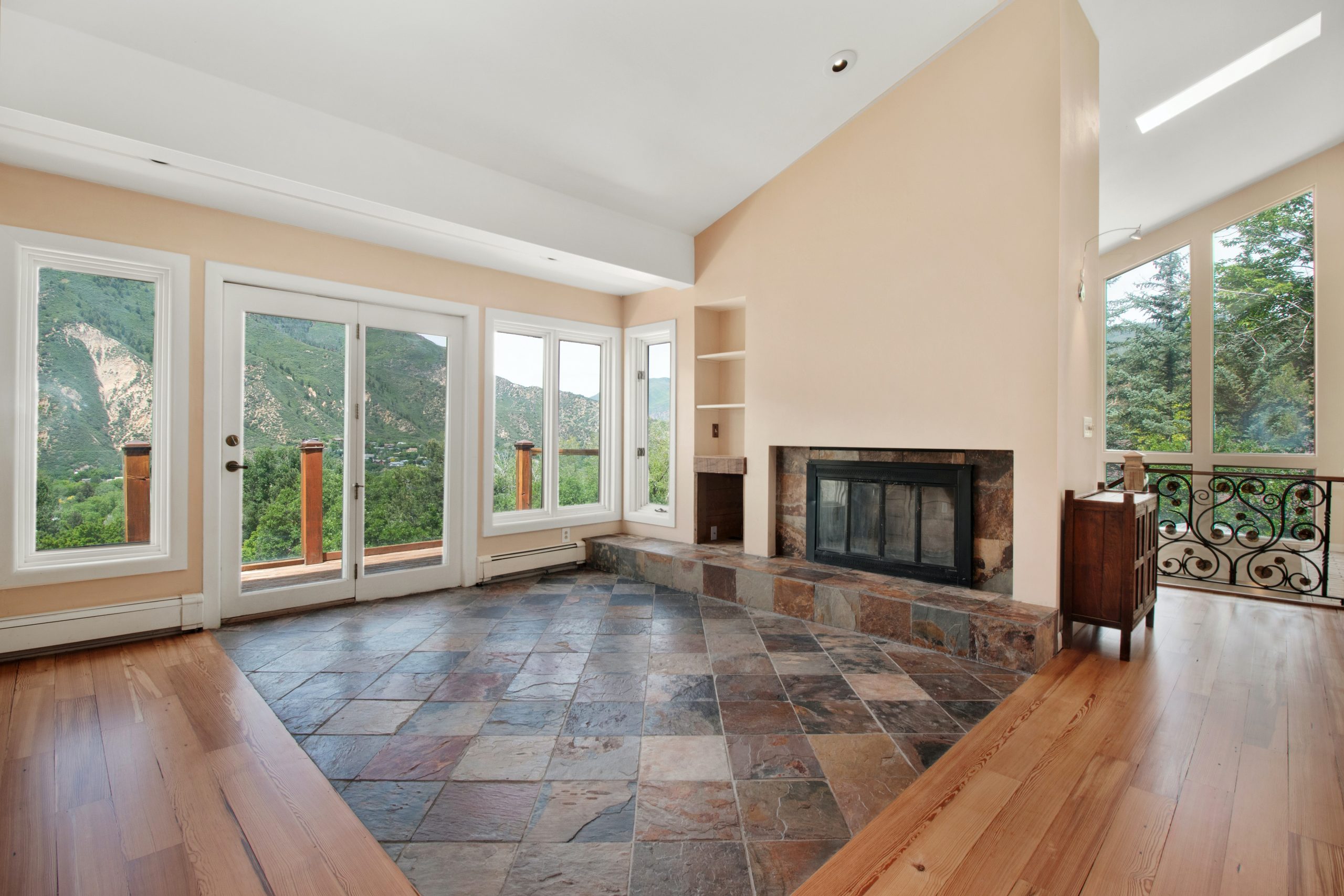In the cold season, there’s hardly anything more pleasant than a warm, cozy floor under your feet. Underfloor heating offers an ideal solution for this and is becoming increasingly popular. But which floor coverings are best for distributing the heat efficiently and evenly in the room? In this comprehensive guide, we want to bring you closer to the optimal tile choice for underfloor heating.
Due to their composition and thermal properties, tiles are an excellent choice for rooms with underfloor heating. They are robust, easy to maintain, and particularly heat-conductive, making them an efficient partner for your heating system. However, some differences should be taken into account in the selection.
In the following sections, we will take a closer look at the advantages of tiles for underfloor heating, highlight various types of tiles, and give tips on selection and installation. Underfloor heating systems are divided into wet and dry systems. Still, in this guide, we are dealing with the materials above the underfloor heating, in our case: tiles.
Why Tiles are Ideal for Underfloor Heating
Regarding floor coverings for underfloor heating, tiles are at the top of the list. Their natural thermal behaviour and robust structure make them an excellent choice that is aesthetically appealing and functional. But let’s take a closer look at this.
Properties of Tiles That Make Them the Perfect Choice
Tiles offer a range of features that make them ideal for use with underfloor heating:
- Heat conductivity: Tiles are naturally good heat conductors. This means they quickly and evenly distribute the heat generated by the underfloor heating over the entire surface. The result is an evenly warm floor that immediately feels cozy.
- Heat storage: In addition to heat conduction, tiles are also excellent heat storage. After the heating has been turned off, they retain the heat longer than many other floor coverings. This contributes to the overall energy efficiency of your heating system.
- Robustness: Tiles are highly resistant to wear and tear and damage. They are a durable option that retains appearance and function even under intensive use.
- Ease of maintenance: Another advantage is the easy maintenance of tiles. They are easy to clean and resistant to stains and moisture, making them ideal for kitchens, bathrooms, and other high-traffic areas.
- Heat distribution: This is a general advantage of underfloor heating compared to conventional heating. Since the heat source is distributed throughout the room, it leads to more even heat.
Energy Efficiency and Floor Tiles: A Duo for Comfort
Underfloor heating systems are known for their energy efficiency, and choosing the right floor tiles can further enhance this.
Due to their excellent heat conductivity and storage, tiles can help reduce the energy consumption of your underfloor heating. They absorb the heat when the heating is turned on and release it over a more extended period, even when it has already been turned off. This results in constant and pleasant warmth in your rooms and helps to keep energy costs low.
The Different Types of Tiles for Underfloor Heating
There are different types of tiles, all of which are excellent for use with underfloor heating.
The type of tile you choose depends on your personal preferences, the style of your home, and your budget. Let’s take a closer look at some of the most popular options.
Ceramic Tiles: Lasting Efficiency
Ceramic tiles are a popular choice for underfloor heating. They are known for their excellent heat conductivity and storage, making them an energy-efficient option.
In addition, they are very durable and resistant to scratches and wear, making them ideal for high-traffic areas. They come in various colors and designs, allowing you to choose a look that perfectly fits your home.
Stone Tiles: Natural Heat Conductivity
Stone tiles, like granite, marble, or slate, are another excellent option for underfloor heating. They are natural heat conductors and store heat effectively, helping to keep your rooms warm long after the heating has been turned off.
Stone tiles are also durable and give any room a luxurious and elegant touch. However, they are generally more expensive than other types of tiles.
Porcelain Tiles: Elegance Meets Functionality
Porcelain tiles are a type of ceramic tile that is particularly dense and water-resistant. This makes them ideal for underfloor heating, especially in moist areas such as bathrooms and kitchens.
Porcelain tiles are also very durable and retain their beauty for years. They are available in various finishes, including those that imitate wood, stone, and other materials, allowing you to choose the perfect look for your home.
Choosing the Right Tiles for Your Underfloor Heating
Choosing the right tiles for your underfloor heating can significantly impact its efficiency and the heat output in your room. Here are some factors to consider in your selection.
Also Read: MODERN HOUSES WITH BROWN ROOFS
Consideration of Tile Size and Thickness
The size and thickness of the tiles can affect the heat output of your underfloor heating. Generally, larger tiles allow for more even heat output, while thicker tiles take longer to heat up but can better store heat.
Considering these factors and finding the right balance for your specific room and needs is essential.
Colour Choice and Its Impact on Heat Output
The colour of your tiles can also have an impact on heat output. Darker tiles absorb and store more heat than lighter tiles, which can cause your room to heat up faster. However, darker tiles can absorb sunlight and heat up more in the summer.
It’s essential to consider the colour of your tiles concerning heat output and aesthetic considerations.
The Importance of Grout in Tiles with Underfloor Heating
The grout between the tiles is essential to the heat output of your underfloor heating. More expansive grout can lead to more effective heat output in the room. Still, it can also result in an unevenly heated tile surface.
It’s essential to carefully choose the size and material of your grout to ensure efficient heat output while maintaining an appealing appearance.
Installation of Tiles for Underfloor Heating
The installation of tiles for underfloor heating requires thorough planning and preparation. Here are some steps to consider in the installation process.
Steps to Prepare the Floor
Preparing the floor (https://fliesenleger-klagenfurt.at/fliesen-legen-boden-vorbereiten/) is a crucial step in installing tiles for underfloor heating. The substrate must be clean, dry, and level to ensure the underfloor heating and tiles can be installed correctly and safely.
This can include removing old floor coverings, levelling unevenness, and applying a suitable primer.
The Laying of Underfloor Heating and Tiles
The laying of the underfloor heating and tiles requires precision and expertise, so it should be undertaken by a professional tiler. The underfloor heating must be evenly distributed across the floor to ensure even heat output.
The tiles must be correctly laid and grouted over the heating to allow efficient heat transfer and maintain an appealing appearance.
Care and Maintenance: Tips for Tiles with Underfloor Heating
Regular Cleaning: Ensure your tiles are cleaned regularly. Dust and dirt can inhibit the heat transfer from the heating system to the room, reducing efficiency. Use a soft mop or vacuum cleaner for cleaning.
Avoid Strong Chemicals: Strong chemical cleaning agents can damage the tiles and potentially interfere with the underfloor heating system. Stick to gentle, non-abrasive cleaning products and always test a small area before applying them.
Monitor Your Underfloor Heating: Keep an eye on your underfloor heating system to ensure it functions correctly. Regular servicing by a professional can help maintain its efficiency and longevity.
Frequently Asked Questions About Tiles for Underfloor Heating Systems
Here are some common questions when considering using tiles for underfloor heating systems.
How long does it take for the tiles to warm up?
The time it takes for your underfloor heating tiles to warm up depends on several factors. These include the type of tiles used, the thickness of the tiles, the type of underfloor heating, and the set temperature. Generally, it can take 30 minutes to several hours for the tiles to reach the desired temperature.
Can any tile be used for underfloor heating?
Although many types of tiles can be used with underfloor heating, some materials are better suited. Ceramic, porcelain, and stone tiles are ideal due to their high thermal conductivity and durability. Other materials, such as wood or vinyl tiles, are less efficient in heat transfer and could suffer from heating impacts.
Are tiles with underfloor heating energy-efficient?
Yes, tiles with underfloor heating can be very energy-efficient. Since tiles have high thermal conductivity, they can distribute heat evenly and effectively throughout the room. Also, adjusting the heating to individual needs allows for further energy saving. However, it is crucial to proceed with care in installing and using underfloor heating to maximize its efficiency.
Conclusion
In conclusion, choosing suitable tiles for your underfloor heating can improve efficiency, comfort, and aesthetics.
Tiles are an excellent choice for underfloor heating due to their high thermal conductivity and robustness. Whether ceramic, porcelain, or stone, each type of tile brings advantages and can help warm and inviting your home.
When purchasing tiles for your underfloor heating, you should consider various factors, including the size and thickness of the tiles, the color, and the type of grout. Careful planning and preparation are as important as proper care and maintenance after installation to ensure that your tiles and underfloor heating function efficiently for many years.
With this comprehensive guide, you now have all the necessary information to choose the optimal tile for your underfloor heating. Take your time to examine your options, and don’t hesitate to seek expert advice to ensure you make a well-informed decision.
After all, nothing beats the feeling of walking on warm, comfortable tiles, especially in the colder months.



